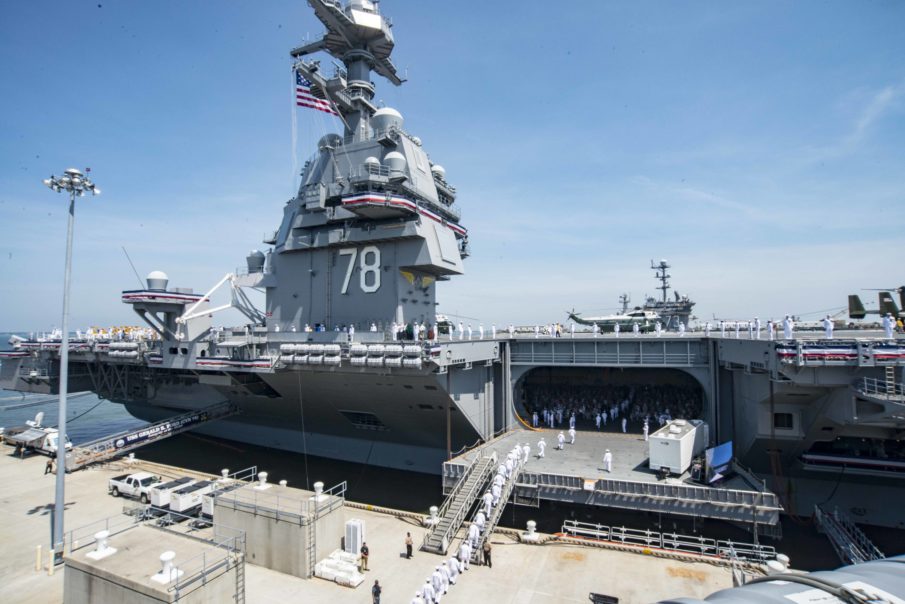Last week, SOFREP reported on a previously undisclosed breakdown of the Navy’s newest aircraft carrier, the USS Gerald R. Ford, that took place in during sea trials in January of this year. The issue, determined to be a manufacturing defect in the GE sourced main thrust bearings, resulted in two separate breakdowns, the second of which prompted an investigation into the cause.
According to the Navy’s assessment, the bearing issue extends to all four massive props used to propel the 100,000-ton vessel to a top speed that exceeds 30 knots, meaning repairs can’t be limited to the main bearing that was identified as the issue in January’s breakdown. Ship builders Huntington Ingalls were contracted by the U.S. Navy to construct the Ford, but General Electric was sub-contracted to provide the ship’s propulsion systems. A GE spokesperson, however, made it clear last week that the company was no longer under contract to produce components for Ford class carriers, including the class’s namesake, the USS Gerald R. Ford.
At the time, the Navy and Huntington Ingalls suggested that they were toying with the idea of making a legal claim against GE, and while those wheels may still be in motion, it would seem the Navy doesn’t anticipate GE’s compliance in the matter and is moving forward with plans to fund the repair effort itself. Further, the Navy announced plans to repair the ship’s 11 “Advanced Weapons Elevators” — all of which have been non-functional since the carrier first took to the water.
Currently, two of those malfunctioning elevators are being used to help “to identify many of the remaining developmental issues for this first-of-class system,” the Navy says. They expect to bring the full suite of elevators online with this round of repairs, but were sure to include in their statement that all the elevator systems “should have been complete and delivered with the ship delivery” in May 2017. That jab at Huntington Ingalls was likely intentional, as the Navy attempts to convince Congress and the Senate to double next year’s carrier procurement plans to fast track the construction of both the third and the fourth carriers of the class.
These repairs, however, mean breaking the lawmaker mandated spending cap on the USS Gerald R. Ford, which aimed to stifle the massive expenditure for America’s newest carrier at below $13 billion. This week’s announced repair costs will now ensure that cap is breached, with the total cost of the carrier now sitting at an anticipated “$13.027 billion” thanks to a projected $120 million in main bearing and elevator repair costs.
Worse still, however, is that these repairs still won’t address the total laundry list of complications and technical issues facing the largest aircraft carrier in the world. The carrier has made headlines in recent years over issues with its electromagnetic launch and recovery systems. Traditionally, carriers have relied on steam-powered catapults to help propel aircraft to take off speeds and to arrest their landing to compensate for limited runway space on the deck of a ship. These steam-powered systems have effective, but slow when compared to the speed in which Navy personnel can launch sorties of aircraft, thus the introduction of the faster-to-reset electromagnetic system. Unfortunately, however, the system proved more effective in theory than in practice, and the Navy has struggled to work the bugs out of the system.
According to the Navy, however, they may finally have the new system in good working order – with a reported 747 shipboard aircraft launches and recoveries completed over 70 consecutive days last year — far exceeding the Navy’s stated goal of 400.
If this latest $120 million investment in the USS Gerald R. Ford will make it combat-capable, however, is yet to be seen.
Image courtesy of the U.S. Navy










COMMENTS
You must become a subscriber or login to view or post comments on this article.